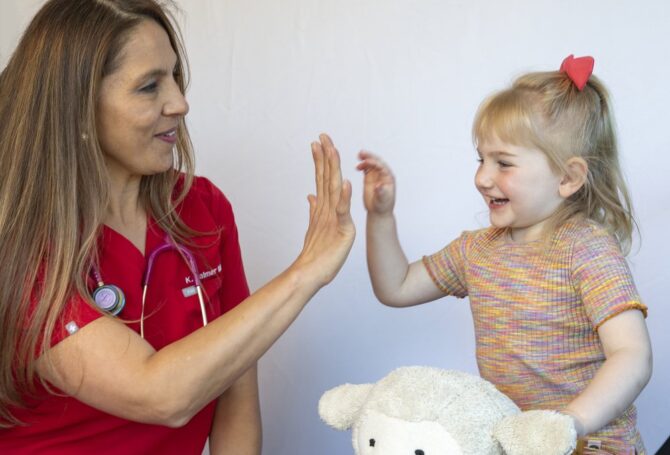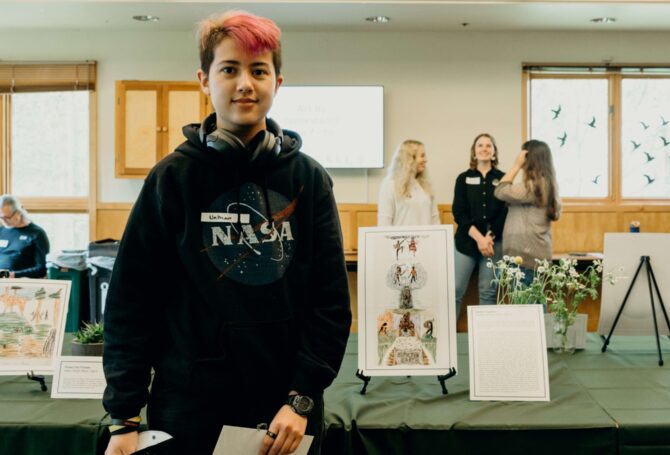
August 26, 2020
The American Academy of Pediatrics urges that children older than 2 years can and should wear cloth face coverings when not able to physically distance, including while in schools, child care, and other group settings.
The first reaction for parents may be that there is no way my kid is going to wear a mask, let alone for a possible full day of school! But, we have seen that kids of all ages and developmental stages have been able to mask up and help prevent the spread of COVID-19.
My clinical practice at OHSU for the last ten years has been to support children with sleep apnea to wear CPAP masks. Although it has not been easy, I have been impressed that most children can adapt to new things, even wearing masks.
Here are my tips as a pediatrician and a parent of two school age children:
Encourage
The more you wear the mask, the better!
The more you do it, the easier it gets! Set a timer. Put on your mask for one minute, then increase to 5, then 10. Nice job! You are a pro mask wearer!
Desensitize
Try each step for two days, 30 minutes each day:
- Start with the child putting the mask around their chin
- Move to wearing the mask over the mouth.
- Now wear over the nose and mouth.
Even if the child is wearing the mask incorrectly at first, this is still a win. They are on their way to mask wearing. Just keep encouraging!
For kids with sensory issues, you could even try placing mask straps around their arm to familiarize the sensation of the mask.
Model
Kids love to do what their trusted adults do! The more you wear a mask, the more your kids will wear one too.
Put masks on their teddy bears and draw pictures with masks. Point out celebrities and athletes who are wearing masks if you are watching television together.
Positive Reinforcement
Reward for mask time ON, not for the mask being off.
Give a token or sticker for every 5 minutes your child can keep a mask on.
Do not scold for having the mask off, only praise for the time the mask is on.
Routine
Make masking part of your routine:
Put a mask in a certain pocket of a backpack.
Keep a mask in the car.
Pack a mask to always keep in your child’s lunch box.
For children with special needs, one option could be to create a visual schedule that includes putting on a mask (Pictures of shoes, putting on a mask, backpack, door!) Consistent routine is especially helpful so children know what to expect when they go out.
Treat your mask like underwear: New mask every day, or wash each night!
Trial and Error
Try out different masks: Some children prefer different textures.
Some children prefer a buff they can wear around their necks. Have children pick out fabrics to sew home-made masks.
Storytelling
Talk to your children openly:
“Wearing a mask keeps others safe from Coronavirus.”
“Other heroes wear masks, too! Firefighters, pilots, and doctors wear masks. Now you can be a hero and wear a mask, too.”
“We need to practice wearing masks so that when you go back to school, you can be a pro at wearing them!”
8/26/20
Elizabeth Super, MD, is a pediatrician at Oregon Health and Science University’s Doernbecher Children’s Hospital. She specializes in sleep medicine and has supported many children with sleep apnea as they learn to successfully wear CPAP masks.




